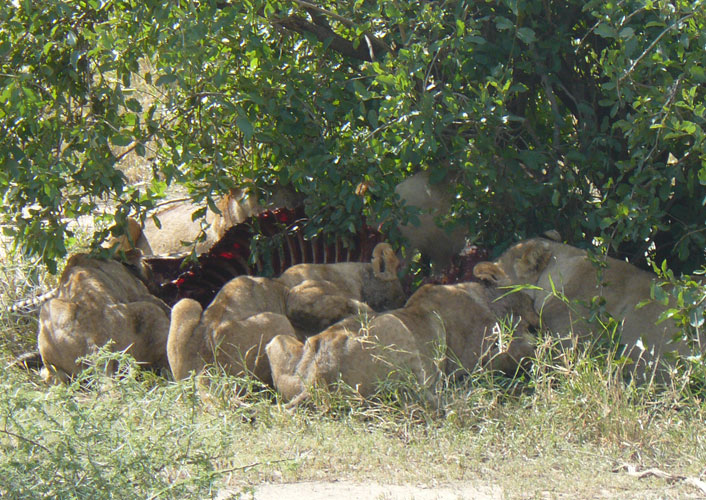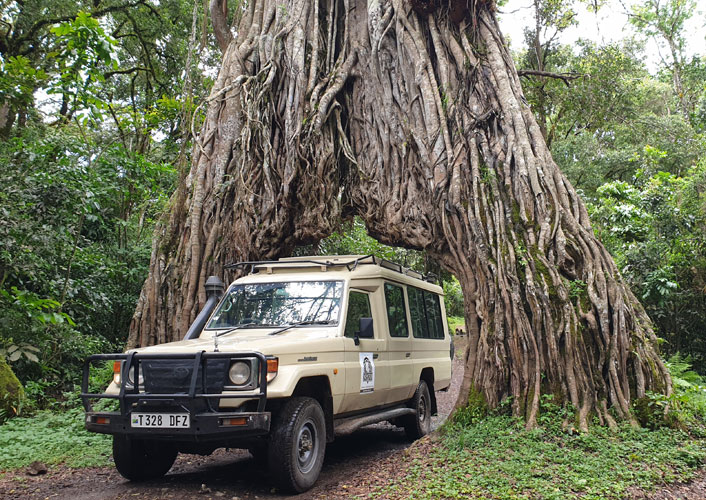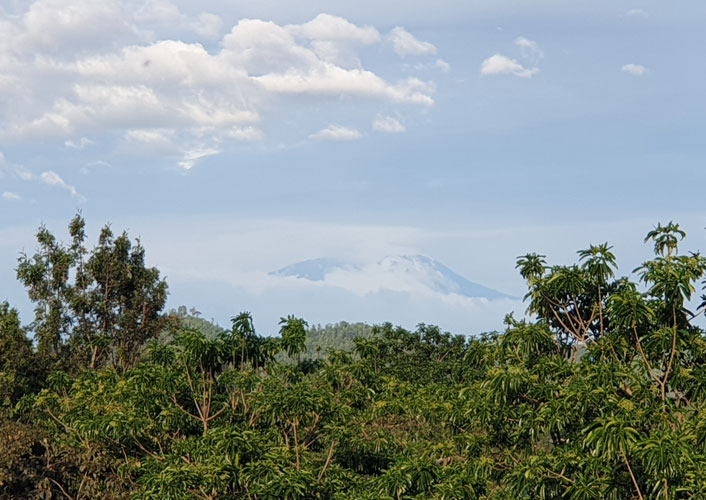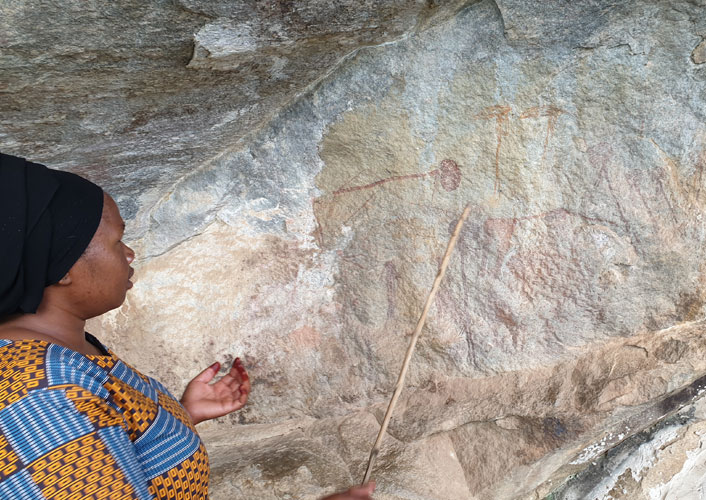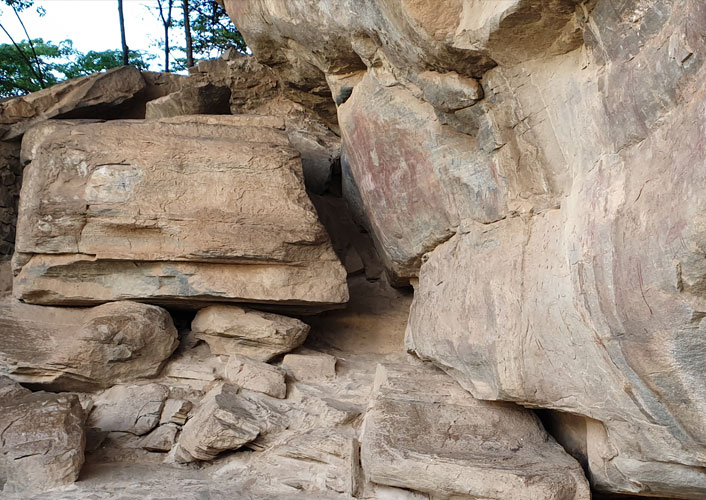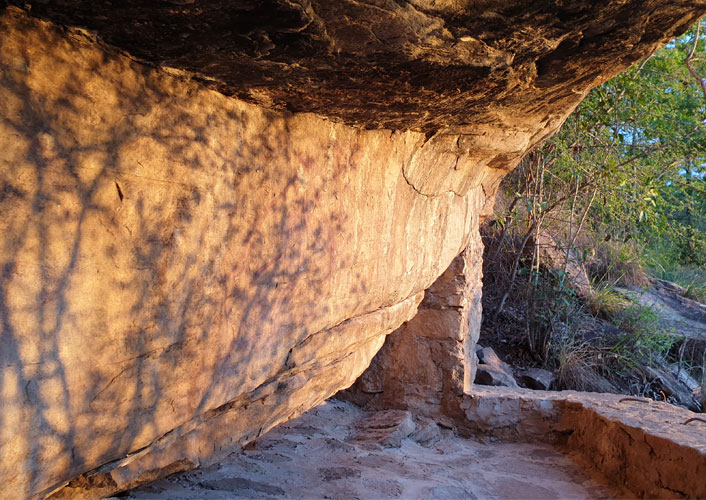On this unique short safari or as a safari extension in Tanzania for active nature enthusiasts and hobby archaeologists, visit a UNESCO World Heritage Site and two national parks. The tour takes you from Arusha National Park to the most unusual rock paintings from Africa in Kondoa to Tarangire National Park. The Arusha National Park is one of the most diverse nature reserves in Tanzania, in which "Hardy Krüger" fell in love with "Hatari" while filming "John Wayne" in 1959. The overhanging rock paintings in Kondoa are so far very unknown and an underestimated attraction in Tanzania and impress with their artistic and fascinating pictures and abstract drawings. The Tarangire National Park was one of the most beautiful with its large number of giant baobabs and herds of elephants.
Individual arrival in Tanzania at Kilimanjaro International Airport. With a bit of luck you can take a look at the 5,895 m high Kilimanjaro "Roof of Africa" on the approach to Arusha. After completing the customs and immigration formalities, you will be received by your personal guide (driver Malley Simon Gwandu/englisch speaking) with refreshments at Kilimanjaro airport. Transfer to Arusha the "Safari capital of Tanzania" in your hotel and time to recover from the arrival. On request, your personal guide will gladly show you the sights such as the local market and other authentic souvenir options. Meals (D) and overnight at Villa Maua (Luxury Boutique Hotel)
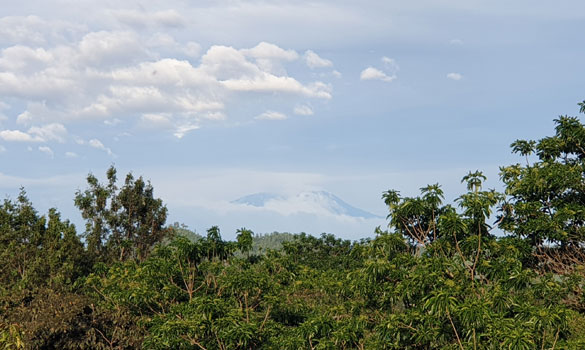
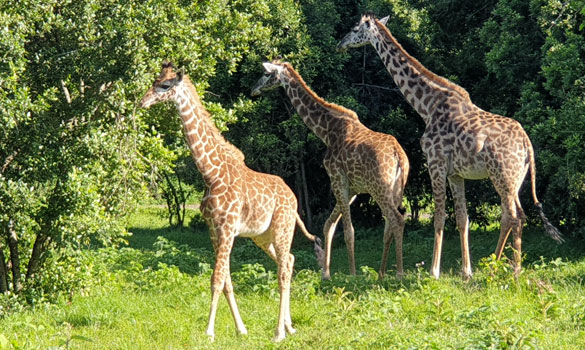
After breakfast and a short safari briefing, we drive with packed lunches for a full day safari to the Arusha National Park. The Arusha National Park is beautifully situated between the summit of Mount Meru (4,565 m. Second highest mountain in Tanzania) and Kilimanjaro 5,895 m with an area of 300 km². The park attracts with its landscape forms and a species-rich flora and fauna and is one of the most beautiful and diversified nature reserves in Tanzania.
On our day safari we will visit some spectacular viewpoints with beautiful views of Mount Kilimanjaro and impressive waterfalls, and drive through the landmark of the park the "Fig Tree Arch" a strangler fig tree. We drive to the Ngurdoto Crater, the small Serengeti (Serengeti Ndogo) and through the Momella area, which is particularly attractive in the months of October to April, when the migratory birds with over 400 species of birds overwinter there and watch the striking mantle monkeys with their long tails that can only be found in the Arusha National Park.
The Arusha National Park is famous for the white huntress "Margarete Trappe" filmed in "Beyond Africa". In the park, "Hatari" was filmed in 1959 with John Wayne and Hardy Krüger. The German film actor "Hardy Krüger" fell in love with the breathtaking landscape and bought a farm after filming and ran it for 10 years. Meals (B, L/D, D = FB) and accommodation at Villa Maua (Luxury Boutique Hotel)
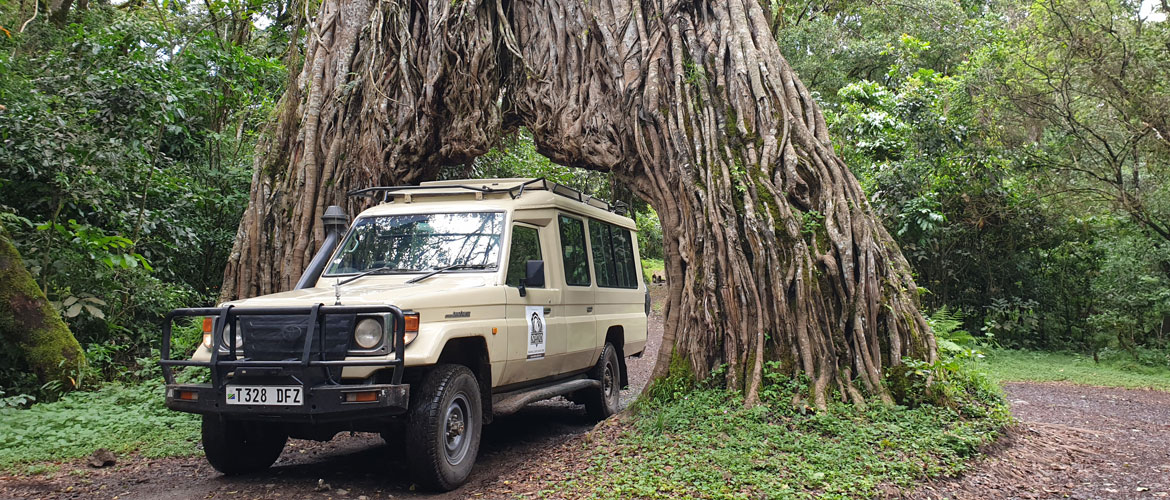
After a hearty breakfast, we drive approx. 245 km to the most extraordinary rock paintings in Africa (Kondoa rock paintings), which were declared a UNESCO World Heritage Site in 2006. These rock paintings, which are over 2,500 years old and probably 10,000 years old, are the most underestimated attraction in Tanzania.
Only a few safari operators have this highlight in their tour program. Over 180 locations are known and more than 400 different locations are suspected. The most famous researchers of rock art in the 1950s were “Louis and Mary Leakey”. Because different rock paintings are assigned to different eras and have not been clarified to this day. Human figures with strange hairstyles, hunting scenes, animal drawings and unusual geometric shapes are predominantly depicted.
Rituals are still carried out in the magical places today and you can spend the night there with a permit. On short hikes we visit the “red paintings” of Fenga, Thawi and Kolo with its lively and varied images as well as the “white paintings” of Pahi. In the late afternoon we drive past the huge baobab trees in the center of Kondoa to our overnight accommodation. Meals (B, L/D, D = FB) and accommodation in the River Side Park in Kondoa
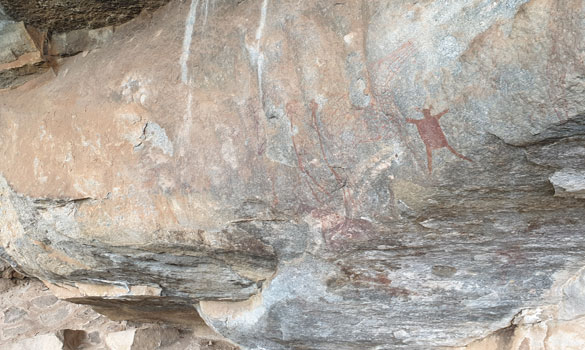
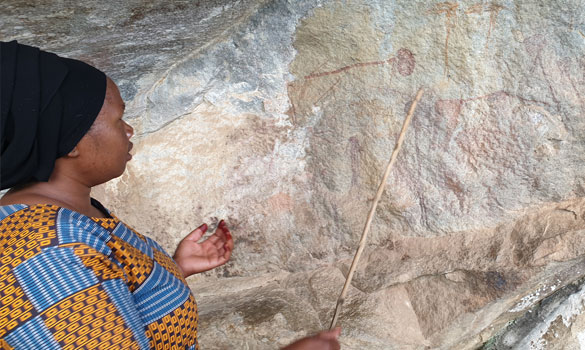
After a hearty breakfast, we drive to a day safari in the Tarangire National Park. The heart of the park is the Tarangire River, which also forms the landscape of the large park. We will have our lunch (lunch) close to nature in the National Park, followed by an afternoon game drive.
The Tarangire National Park is known for its variety of stunning baobabs (African-baobab trees) and for the dramatic interaction between predators and prey in one of the park's waterholes. Elephant, eland, elk, oryx, lesser kudu and many other species can be seen in the park. Another peculiarity of the national park are the tree-climbing pythons and the more than 400 species of birds, such as the widely used hornbill, partridges, pelicans, eagles, vultures and various heron species. Due to the high number of livestock throughout the year, there are also a large number of lions that make an observation very likely.
Meals (B, L/D, D = FB) and accommodation at Tarangire Simba Lodge
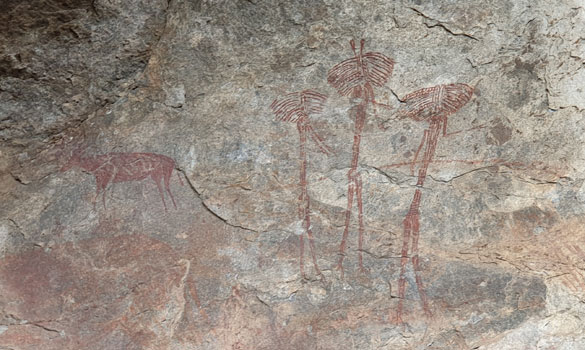

After breakfast (B) it is unfortunately already saying goodbye. We accompany you to Kilimanjaro International Airport for your onward flight home with unforgettable impressions and countless stories in your luggage or for your individual safari extension to Lake Manyara, Ngorongoro Crater and further into the Serengeti.
_585x350.jpg)
_585x350.jpg)
Our tip: We recommend at the end of your safari an overnight stay in Arusha to ensure a relaxing holiday or for your individual extension to Zanzibar or how about a visit to the chimpanzees in the Gombe Stream National Park on the picturesque Lake Tanganyika. We are happy to help with any extensions you may require and accommodation choices in Arusha and the surrounding area
Our individual and personal travel planning is a non-binding offer and is based on our terms of contract. For the legal exclusion period in the assertion of claims, the statute of limitations of claims and other obligations to avoid loss of claims, we refer to the relevant passages of our terms and conditions. We reserve the right to travel to similar hotels / lodges / camps due to local changes. adapt.
